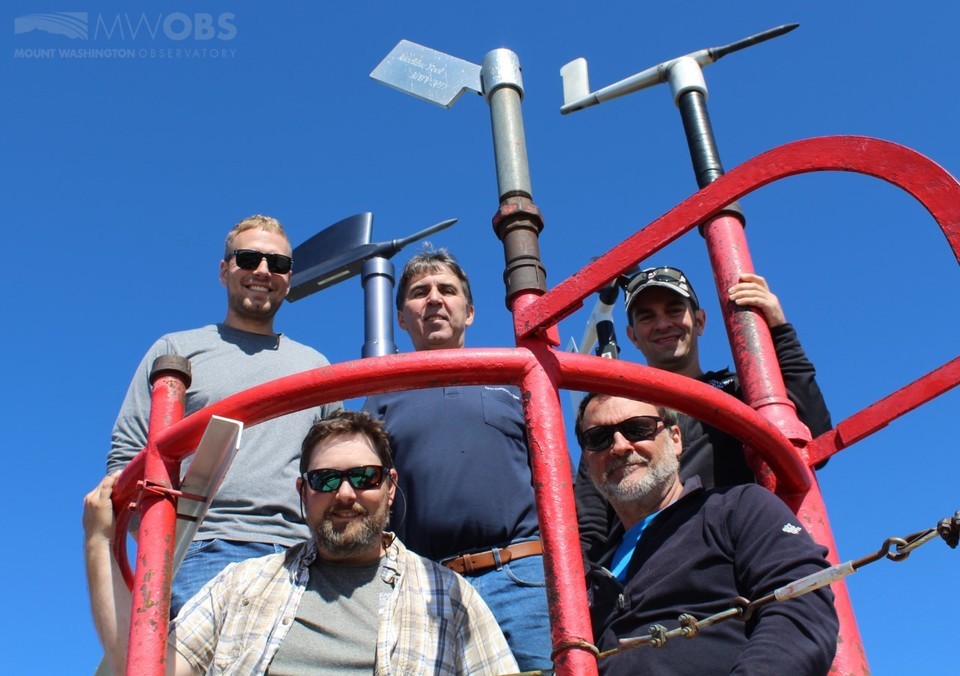Bring on the Wind!
2019-09-18 10:23:23.000 – Eric Kelsey, Lead Research Scientist
The next step in ensuring a long future of research-quality wind speed measurements occurred this summer when the next-generation pitot static tube anemometer was disassembled and modified to fix a couple of problems that arose this spring and summer. In the spring when temperatures began to rise above freezing regularly, we noticed occasional spikes in wind speed that looked unrealistic. While we expect the NextGen pitot to measure higher wind gust speeds than Pitot 19 (our operational pitot) because of significantly shorter tubing, some gusts were over 40 mph higher with no sign of a big gust from the Pitot 19.
Given all the data we had, we correctly suspected water was getting into the slip ring, which is located in the top of the mast. When we disassembled the NextGen pitot in June, our suspicions were confirmed – we found water marks and rust on the inside. Fortunately, all we needed to do was remove the slip ring – problem solved! The purpose of the slipring was to prevent twisting of wires coming down the mast from the heaters and pressure-transducers. However, this is not a big problem because the wind does not turn over 360 degrees very often – only a few times a year. Observers can easily identify when this has happened, and they can simply go to the top of the parapet and turn the pitot around to unwind the wires. They already do this for the Pitot 19.
After the rewiring was completed, we reinstalled the NextGen pitot on the parapet on August 13th. It has performed terrifically through many rain and high humidity events since then – it appears removing the slipring worked.
The wind has been moving at its typical late summer snail’s pace since the NextGen pitot was reinstalled. But in the last week, sustained winds have reached 60-70 mph a few times. The next real test will be the next time the summit sees strong winds gusting over 100 mph with rain. We have every reason to believe the NextGen pitot will perform flawlessly in any conditions on the summit – and we will eagerly await fall and winter’s wrath to put the NextGen pitot to the test. Bring on the wind!

The Next Generation pitot tube system (dark gray pitot system on the left) is a collaboration with General Electric and University of Massachusetts-Lowell Engineering. Left to right: Eddie Walton (GE), Keith Garrett (MWO), Joe Chaves (GE), Pete Gagne (MWO), and Eric Kelsey (MWO).
Eric Kelsey, Lead Research Scientist
Supporter Spotlight: Ryan Shepard
Supporter Spotlight: Ryan Shepard By Ryan Shepard and Carissa Milliman Ever since I was a kid, living in Western New York and growing up with lake effect snow, I thought harsh weather was incredibly
Supporter Spotlight: Erik Rider
Supporter Spotlight: Erik Rider By Wendy Almeida For Erik Rider, supporting Mount Washington Observatory comes from a lifelong fascination with weather and how it shapes daily life. Growing up along the Massachusetts coast, he
An Autumn Above the Clouds on Mount Washington
An Autumn Above the Clouds on Mount Washington By Cassie Farnsworth I don’t know how many times in life you get to say “it was exactly what I hoped it would be,” but my


